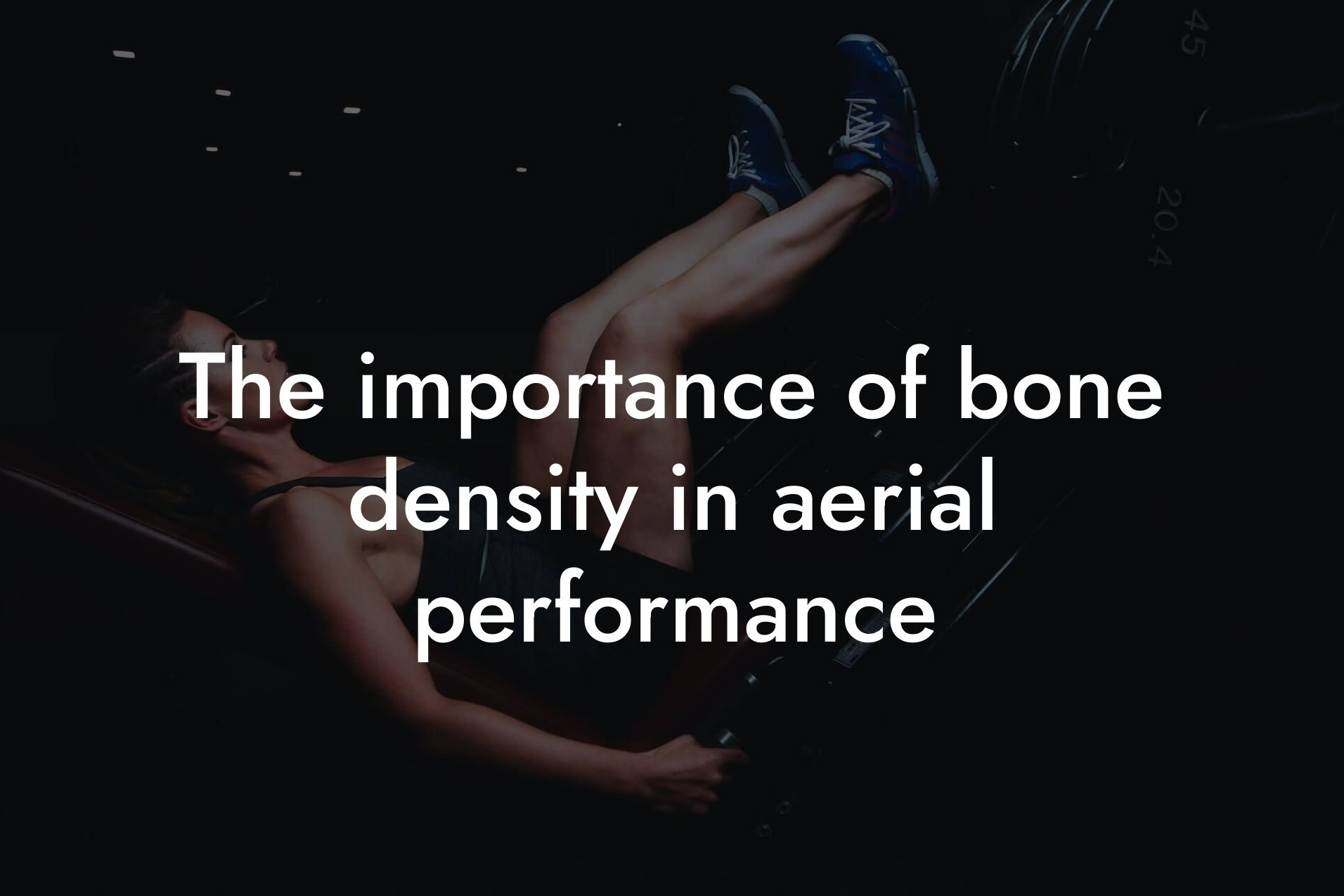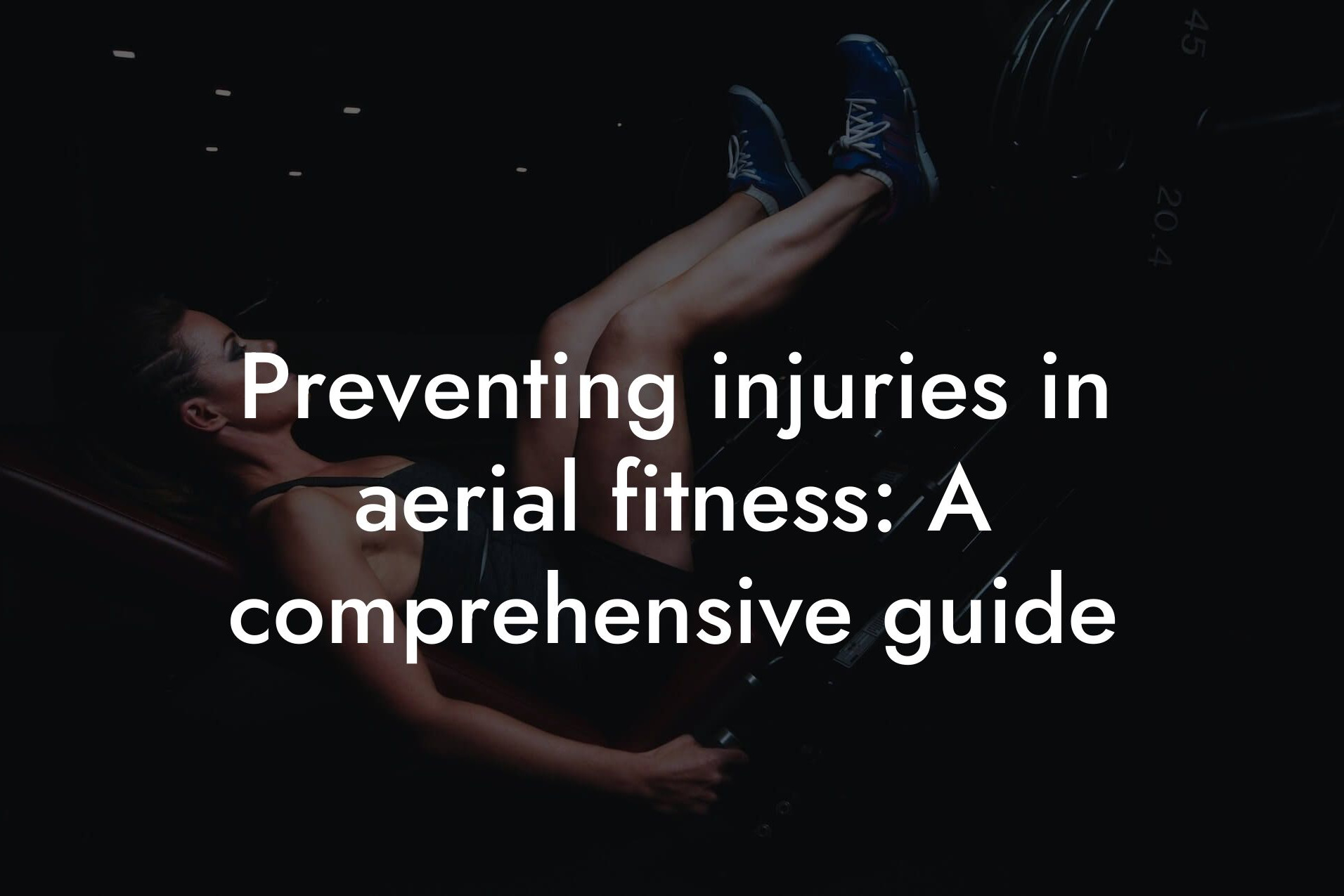As a high-earning professional, you understand the importance of maintaining a fit and healthy physique. Aerial fitness, in particular, requires a unique combination of strength, flexibility, and endurance. To take your aerial fitness to the next level, it's essential to monitor your progress accurately. This is where DEXA scans come in – a game-changing technology that provides a comprehensive assessment of your body composition, bone density, and overall fitness. In this article, we'll delve into the world of DEXA scans and explore how they can help you optimize your aerial fitness training.
Table of Contents
What is a DEXA Scan?
A DEXA (Dual-Energy X-ray Absorptiometry) scan is a non-invasive, pain-free medical imaging test that measures bone density, lean mass, and fat mass. It's commonly used to diagnose osteoporosis, but its applications extend far beyond bone health. DEXA scans provide a precise breakdown of your body composition, allowing you to track changes in your muscle mass, body fat percentage, and bone density over time.
How Does a DEXA Scan Work?
During a DEXA scan, you'll lie on a flat table while a scanner arm passes over your body, emitting low-level X-rays. The scan takes about 10-15 minutes to complete and is completely safe. The DEXA machine uses two different energy levels to measure the absorption of X-rays by your body. This information is then used to calculate your bone density, lean mass, and fat mass.
What Can a DEXA Scan Measure?
A DEXA scan provides a wealth of information about your body composition, including:
- Bone density: A measure of your bone strength and density, which is essential for aerial fitness activities that involve high-impact landings and stress on your joints.
- Lean mass: The amount of muscle mass in your body, which is critical for aerial fitness performance and overall health.
- Fat mass: The amount of body fat you have, which can impact your aerial fitness performance and increase your risk of injury.
- Body fat percentage: A calculation of your total body fat as a percentage of your total body weight.
- Visceral fat: The amount of fat stored around your organs, which is a key indicator of metabolic health.
Why is DEXA Scan Important for Aerial Fitness?
Aerial fitness requires a unique combination of strength, power, and endurance. To optimize your performance, you need to understand how your body is responding to your training. DEXA scans provide valuable insights into your body composition, allowing you to:
- Monitor changes in your muscle mass and body fat percentage, ensuring you're building strength and losing fat in the right areas.
- Track changes in your bone density, helping you identify potential areas of weakness and reduce your risk of injury.
- Optimize your nutrition and training programs, making data-driven decisions to improve your aerial fitness performance.
How Often Should I Get a DEXA Scan?
The frequency of DEXA scans depends on your individual goals and needs. As a general rule, we recommend getting a DEXA scan:
- At the beginning of your aerial fitness journey, to establish a baseline measurement.
- Every 6-12 weeks, to track changes in your body composition and adjust your training and nutrition programs accordingly.
- When you're experiencing a plateau or stagnation in your progress, to identify areas for improvement.
What are the Benefits of Using DEXA Scans for Aerial Fitness Progress Monitoring?
By incorporating DEXA scans into your aerial fitness routine, you can:
- Make data-driven decisions, rather than relying on guesswork or intuition.
- Optimize your training and nutrition programs, leading to faster progress and improved performance.
- Reduce your risk of injury, by identifying areas of weakness and taking proactive steps to address them.
- Gain a competitive edge, by having a deeper understanding of your body composition and how it responds to training.
In conclusion, DEXA scans are a powerful tool for aerial fitness enthusiasts looking to take their training to the next level. By providing a comprehensive assessment of your body composition, bone density, and overall fitness, DEXA scans help you make data-driven decisions, optimize your training and nutrition programs, and reduce your risk of injury. At Tano Performance Group, we're committed to helping high-earning professionals like you achieve their fitness goals. Contact us today to learn more about our DEXA scan services and take the first step towards unlocking your full aerial fitness potential.
Frequently Asked Questions
What is a DEXA scan?
A DEXA (Dual-Energy X-ray Absorptiometry) scan is a non-invasive medical imaging test that measures bone density and body composition. It uses low-level X-rays to produce images of the inside of the body, which helps healthcare professionals assess bone health, body fat percentage, and lean mass.
How does a DEXA scan work?
A DEXA scan works by passing two X-ray beams of different energy levels through the body. The beams are absorbed by different tissues, such as bone and soft tissue, at varying rates. The machine then calculates the difference in absorption rates to produce detailed images and measurements of bone density and body composition.
What is the purpose of using DEXA scans in aerial fitness?
The purpose of using DEXA scans in aerial fitness is to monitor progress, track changes in body composition, and optimize training programs. By regularly assessing bone density, body fat percentage, and lean mass, aerial athletes can make data-driven decisions to improve their performance and reduce the risk of injury.
How often should I get a DEXA scan?
The frequency of DEXA scans depends on individual goals and needs. For aerial athletes, it's recommended to get a scan every 6-12 months to track progress and make adjustments to their training program. However, athletes who are experiencing significant changes in their body composition or have specific health concerns may need to get scanned more frequently.
What are the benefits of using DEXA scans in aerial fitness?
The benefits of using DEXA scans in aerial fitness include accurate tracking of progress, identification of areas for improvement, and personalized training programs. DEXA scans also provide valuable insights into bone health, which is essential for aerial athletes who are at risk of osteoporosis and fractures.
How accurate are DEXA scans?
DEXA scans are highly accurate, with a margin of error of around 1-2%. They are considered the gold standard for measuring bone density and body composition, and are widely used in medical and research settings.
Are DEXA scans safe?
Yes, DEXA scans are safe and non-invasive. They use low-level X-rays, which are significantly lower than those used in other medical imaging tests. The scan itself is painless and takes around 10-15 minutes to complete.
What is the difference between a DEXA scan and a body fat scale?
A DEXA scan provides a detailed breakdown of body composition, including bone density, lean mass, and body fat percentage. A body fat scale, on the other hand, provides a single measurement of body fat percentage. While body fat scales can be useful for tracking progress, they are not as accurate or comprehensive as DEXA scans.
How do I prepare for a DEXA scan?
To prepare for a DEXA scan, avoid eating or drinking for at least 2 hours prior to the scan. Wear loose, comfortable clothing and avoid wearing metal objects or jewelry that may interfere with the scan. It's also recommended to avoid exercising or engaging in strenuous activities for 24 hours prior to the scan.
What happens during a DEXA scan?
During a DEXA scan, you'll lie down on a flat table, and the machine will pass over your body, taking images and measurements. The scan is painless and takes around 10-15 minutes to complete. You may be asked to hold your breath or remain still for short periods during the scan.
How long does it take to get the results of a DEXA scan?
The results of a DEXA scan are typically available within 24-48 hours. Your healthcare professional will review the results with you, providing a detailed breakdown of your bone density, body composition, and other relevant metrics.
What do the results of a DEXA scan mean?
The results of a DEXA scan provide a detailed breakdown of your bone density, body fat percentage, and lean mass. The results will also include a comparison to average values for your age and sex, as well as any changes from previous scans. Your healthcare professional will help you interpret the results and develop a personalized plan to achieve your fitness goals.
Can I use a DEXA scan to track my progress in aerial fitness?
Yes, DEXA scans are an excellent tool for tracking progress in aerial fitness. By regularly assessing your bone density, body fat percentage, and lean mass, you can make data-driven decisions to optimize your training program and achieve your goals.
How does a DEXA scan help me achieve my aerial fitness goals?
A DEXA scan helps you achieve your aerial fitness goals by providing a detailed understanding of your body composition and bone health. With this information, you can develop a personalized training program that targets specific areas for improvement, such as increasing lean mass or reducing body fat percentage.
Can I use a DEXA scan to monitor my bone health?
Yes, DEXA scans are an excellent tool for monitoring bone health. By regularly assessing your bone density, you can identify any changes or abnormalities, and take proactive steps to prevent osteoporosis and fractures.
What are the risks of not monitoring my bone health?
The risks of not monitoring your bone health include an increased risk of osteoporosis, fractures, and other bone-related disorders. Aerial athletes are at a higher risk of bone injuries due to the high-impact nature of their sport, making regular monitoring of bone health essential.
How does a DEXA scan help me reduce my risk of injury?
A DEXA scan helps you reduce your risk of injury by providing valuable insights into your bone health and body composition. By identifying areas for improvement, you can develop a personalized training program that targets specific areas, reducing your risk of injury and improving overall performance.
Can I use a DEXA scan to track my progress in other sports or activities?
Yes, DEXA scans can be used to track progress in other sports or activities. The scan provides a detailed breakdown of body composition and bone health, making it an excellent tool for athletes and individuals engaged in various physical activities.
How much does a DEXA scan cost?
The cost of a DEXA scan varies depending on the location, healthcare provider, and other factors. On average, the cost of a DEXA scan ranges from $100 to $300. However, some insurance plans may cover part or all of the cost, so it's essential to check with your provider before scheduling a scan.
Is a DEXA scan covered by insurance?
Insurance coverage for DEXA scans varies depending on the provider and policy. Some insurance plans may cover part or all of the cost, while others may not. It's essential to check with your provider before scheduling a scan to determine coverage and out-of-pocket costs.
What are the limitations of using DEXA scans in aerial fitness?
The limitations of using DEXA scans in aerial fitness include the need for regular scans to track progress, the potential for variability in results, and the need for a healthcare professional to interpret the results. Additionally, DEXA scans may not be suitable for individuals with certain medical conditions or implants.
How does Tano Performance Group use DEXA scans to support aerial athletes?
Tano Performance Group uses DEXA scans to support aerial athletes by providing accurate tracking of progress, personalized training programs, and expert guidance on interpreting scan results. Our team of healthcare professionals and trainers work together to help athletes achieve their goals and optimize their performance.
Here are some related articles you might love...
- The importance of bone density in aerial performance
- Nutrition tips for sustained energy in aerial classes
- Preventing injuries in aerial fitness: A comprehensive guide
- Improving core strength for aerial arts
- Strength training tips specific to aerial fitness
- How body composition affects performance in aerial fitness
- Maintaining muscle recovery with aerial training
- Reducing body fat for improved strength-to-weight ratio in aerial arts
- Balancing strength and flexibility in aerial fitness
Zak Faulkner
Zak Faulkner is a leading authority in the realm of physical health and body composition analysis, with over 15 years of experience helping professionals optimise their fitness and well-being. As one the experts behind Tano Performance Group, Zak has dedicated his career to providing in-depth, science-backed insights that empower clients to elevate their physical performance and overall health.
With extensive knowledge of DEXA technology, Zak specializes in delivering comprehensive body assessments that offer precise data on body fat, muscle mass, bone density, and overall physique. His expertise enables individuals to make informed decisions and achieve their fitness goals with accuracy and confidence. Zak’s approach is rooted in a deep understanding of human physiology, combined with a passion for helping clients unlock their full potential through personalised strategies.
Over the years, Zak has earned a reputation for his commitment to excellence, precision, and client-focused service. His guidance is trusted by top professionals who demand the best when it comes to their health. Whether advising on fitness programs, nutritional strategies, or long-term wellness plans, Zak Faulkner’s insights are a valuable resource for anyone serious about taking their health and fitness to the next level.
At Tano Performance Group, Zak continues to lead our Content Team revolutionising how professionals approach their physical health, offering unparalleled expertise that drives real results.




